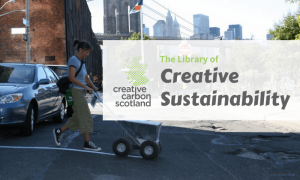by Lauren Tuckerman
Lauren is a researcher who has been working with the Stove for over a year looking at the Stove as a business and how it interacts with other organisations, the community and its members.

I first came across The Stove three years ago when I was working in a different job, but as soon as I started this research project I knew I wanted to work with them. My supervisors recently asked me why this was, and that made me reflect on what attracted me to working with The Stove.
The first thing I remember about meeting The Stovies was how friendly they were, and their interest in what I was researching. That was a big plus for me. When I asked to research them, they proposed a more collaborative approach. This was right up my street, I wanted to research with them, rather than do research on them.
From the perspective of my topic, this was also interesting. I’m looking at how ‘open’ organisations are to different sources of information. And already The Stove was showing that they were ready to collaborate with researchers. They understood that it would take up their time and were careful to make sure the research was the right fit for them.
Their openness to working with me did not stop there. I was invited to different events, meetings and discussions. While some of the other researchers I know working with other companies were struggling to get information from organisations, I was heading to meet The Stove’s partners, sitting in on team meetings and attending the board away day.
Throughout this time, I built up a rich picture of how The Stove does business, and how it works with partners, the community and its members. While I am still in the middle of getting all my notes and interviews ready to be analysed, I have a few insights into what makes The Stove an interesting business.
The Stove’s Curatorial Team is one of the ways they are unusual. The majority of charities and community groups will have a voluntary board (which The Stove also have) who are in charge of overseeing the organisation, but who also may have a huge impact on the direction of the organisation. The Stove has two levels to set direction, the board and the CT, and at the board away day, both levels came together to generate ideas for the future of The Stove.
In terms of my research, this was interesting and important. The Curatorial Team is made up of practising artists who have strong ties to the community of Dumfries, and they therefore bring in practical experiences and their ideas help shape The Stove.
When looking at how they decide when to work with another organisation, we spent a lot of time talking about the ‘fit’ between The Stove and the possible partner. There isn’t a set of conditions an organisation or person had to meet to work with The Stove. The way people work is important in making this decision. That’s not to say that The Stove expects everyone to do things their way. It looks more like the ethos of the approach that matters. The values embedded in how people work are important to The Stove.
Although I’m two thirds of the way through this research project, I still feel I have so much to learn and that my observations, thinking and ideas will grow. I know one thing for sure, I’m so grateful I was able to work with The Stove and they have supported me with so much throughout the process.
Lauren will be presenting and sharing alongside researcher Lizzie Smith as part of an open discussion on the role of cultural and third sector organisations like The Stove this month. It’s open to all and takes place on Thursday, 21st February.






















